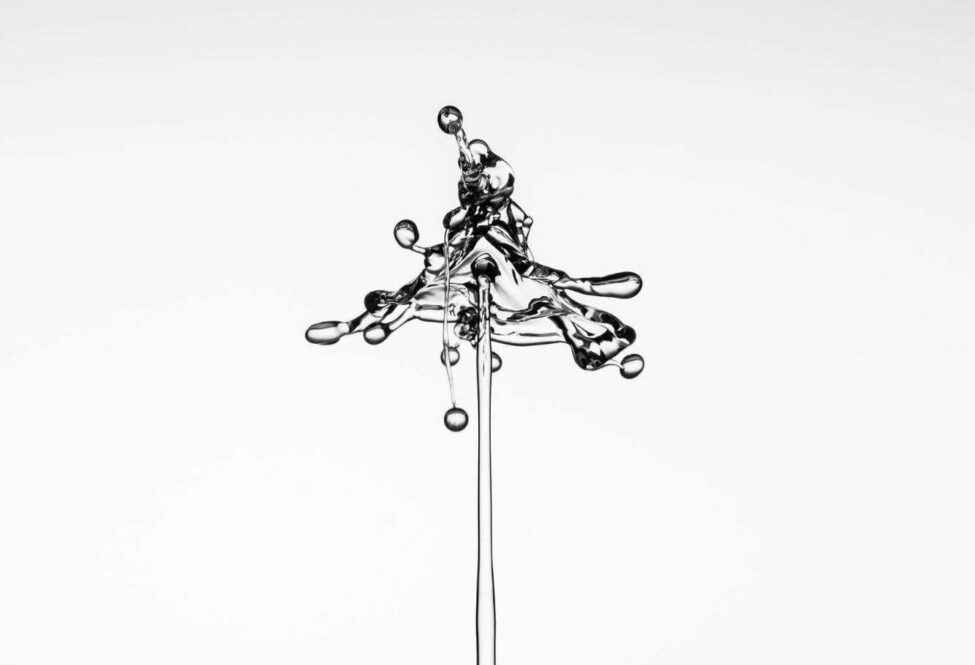SOURCE OF MANGANESE IN DRINKING WATER
Manganese is a mineral that is found naturally in the environment and is one of the most abundant metals on the earth’s surface, usually occurring with iron. It can be found in both groundwater and surface water from natural sources or because of anthropological activity such as mining and industrial discharges. Manganese is used in various industries, including the manufacture of iron and steel alloys, batteries, glass, fireworks, various cleaning supplies, fertilizers, varnish, fungicides, cosmetics, and livestock feeding supplements. Manganese green sand is used for potable water treatment. Drinking water can be a source of exposure to manganese. Elevated manganese concentrations can occur in municipal water as well as water from private wells. In general, manganese is more prevalent and found at higher concentrations in groundwater than surface water. Most exposure occurs from ingestion and not from bathing/showering.
HEALTH AND AESTHETIC IMPACTS OF MANGANESE IN DRINKING WATER
Manganese is an essential element for many living organisms, including humans. For example, some enzymes require manganese (e.g. manganese superoxide dismutase), and some are activated by the element (e.g. kinases, decarboxylases). Adverse health effects can be caused by inadequate intake or overexposure. Manganese deficiency in humans appears to be rare because manganese is present in many common foods. The neurological effects of inhaled manganese have been well documented in humans chronically exposed to elevated levels in the workplace. The syndrome known as “manganism” is caused by exposure to very high levels of manganese dusts or fumes and is characterized by a “Parkinson-like syndrome”, including weakness, anorexia, muscle pain, apathy, slow speech, monotonous tone of voice, emotionless “mask like” facial expression and slow, clumsy movement of the limbs.
However, Manganese in drinking water causes mainly aesthetic problems than any adverse health effects. Elevated concentration of dissolved Manganese can impart turbidity and blackish brown color to drinking water. Dissolved Manganese when reacted with oxidants like chlorine in the public drinking water distribution system can lead to water fixtures and laundry staining. Also, manganese particles can deposit in plumbing and water-using appliances in a consumer’s home or business including water heaters, dishwashers, laundry machines, and water softeners.
HOME WATER FILTRATION FOR MANGANESE REMOVAL
Water treatment technologies that have been shown to be capable of removing manganese from drinking water in your home include cation exchange water softening, distillation, filtration, and reverse osmosis.
The 3MWTS Softener Series is a streamlined treatment solution from 3M Manufacturers for iron, manganese, and hardness reduction. The resulting soft water can help reduce energy costs and detergent use for dishwashers and washer units, and thus maintain appliance longevity and efficiency. Some of the features of the 3MWTS Series include:
- 3MWTS200-125 is WQA certified, NSF/ANSI Standard 44 listing for reduction of Barium, Radium as well as water hardness
- Optimized for Iron, Manganese, and Hydrogen Sulfide reduction
- 3MWTS200-125 with a 1.25″ valve offers greater flexibility with home/application size
- Includes a proprietary salt shelf, reducing service issues
- 3MWTS200-125 utilizes a full 1.25″ porting throughout the Resin Re-circulators as well as the valve, a true industry differentiated feature
SPECIFICATIONS

| Application | Water Conditioning for Bathing/Showering, Water Conditioning for Spots and Hardness Buildup on Dishes, Glassware and Silverware, Water Conditioning to Extend the Life of Appliances, Water Conditioning to Help Save Energy Costs, Water Softening |
| Dimensions (Metric) | 38 cm x 135 cm x 87 cm, 38 cm x 38 cm x 87 cm |
| End Modification | Water Treatment System |
| Flow Rate (Metric) | 29.9 Liter per minute, 41.311 Liter per minute, 42.069 Liter per minute |
| Industries | Home |
| Inlet Outlet Size | 1″ NPT, 1/4″ NPT |
| Maximum Operating Temperature (Celsius) | 43.3 Degree Celsius |
| Pressure Range | 20 – 125 psi |
| Pressure Range (Metric) | 138 – 862 kPa |
| Reduction Claims | Hardness, Scale |
| Series | 3M™ WTS Series |
| Temperature Range (Celsius) | 4.4 – 43.3°C |
SUMMARY
The removal of Manganese is essential for aesthetic and health concerns. The water softening series from 3M offer a broad range of applications with their 3MWTS Series such as water conditioning for showering, water conditioning for spots and hardness buildup on dishes, water conditioning to extend life of appliances, water conditioning to save energy costs, and water softening for drinking purposes. Sani Water is one of the exclusive suppliers and consultants for 3M™ Water Filtration Products including the 3MWTS Water Softener Series. The consultants at Sani Water can help their customers with suitable recommendations for manganese removal and to resolve hardness and scale issues. The technicians can also help with installation of the recommended filter products. Sani Water is dedicated to offer best solutions to meet the drinking water requirements of their customers.
REFERENCES
- Tobiason, J. E., Bazilio, A., Goodwill, J., Mai, X., & Nguyen, C. (2016). Manganese removal from drinking water sources. Current Pollution Reports, 2(3), 168-177.
- Carrière, A. M. Brouillon, S. Sauvé, M. Bouchard, B. Barbeau. 2011. Performance of Point-Of-Use Devices to Remove Manganese From Drinking Water, J Environ Sci Health A Tox Hazard Subst Environ Eng. 46:6:601-607.
- https://www.who.int/water_sanitation_health/dwq/chemicals/manganese.pdf
- https://www.wqa.org/learn-about-water/water-q-a/manganese
- https://www.3m.com/3M/en_US/company-us/all-3m-products/~/All-3M-Products/Safety/Water-Quality/?N=5002385+8709322+8709409+8711017+8740556+3294857497&rt=r3#applications
- https://www.3m.com/3M/en_US/company-us/all-3m-products/~/All-3M-Products/Safety/Water-Quality/?N=5002385+8709322+8709409+8711017+8740539+8740556+3294857497&rt=r3





